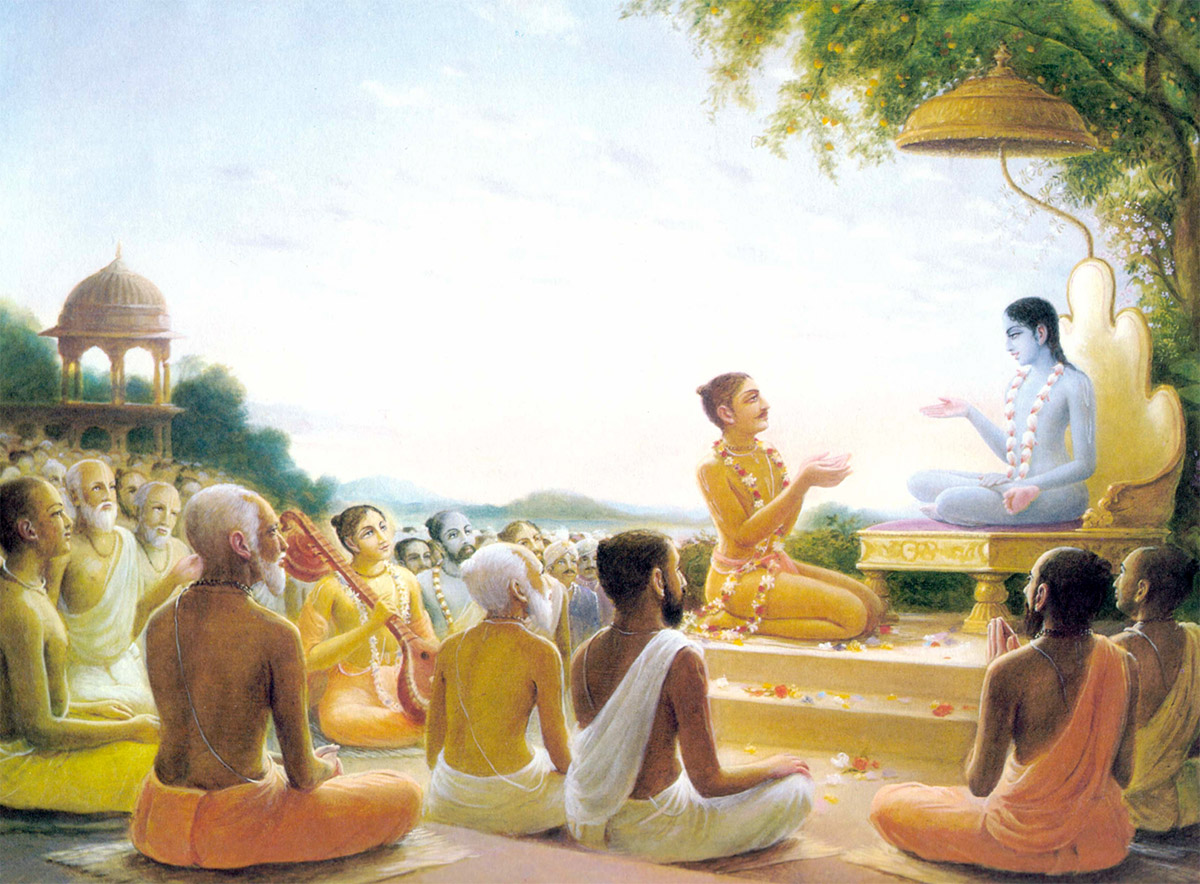Śrīmad-Bhāgvatam – Canto 12
(Q&A Format)
The age of Kaliyuga.
As the Age of Kali progresses, all good qualities of men diminish and all impure qualities increase. Atheistic systems of so-called religion become predominant, replacing the codes of Vedic law. Śukadeva Gosvāmī said: Then, O King, religion, truthfulness, cleanliness, tolerance, mercy, duration of life, physical strength and memory will all diminish day by day because of the powerful influence of the Age of Kali. In Kali-yuga, wealth alone will be considered the sign of a man’s good birth, proper behavior and fine qualities. And law and justice will be applied only on the basis of one’s power. Men and women will live together merely because of superficial attraction, and success in business will depend on deceit. Womanliness and manliness will be judged according to one’s expertise in sex, and a man will be known as a brāhmaṇa just by his wearing a thread. A person’s spiritual position will be ascertained merely according to external symbols, and on that same basis people will change from one spiritual order to the next. A person’s propriety will be seriously questioned if he does not earn a good living. And one who is very clever at juggling words will be considered a learned scholar. A person will be judged unholy if he does not have money, and hypocrisy will be accepted as virtue. Marriage will be arranged simply by verbal agreement, and a person will think he is fit to appear in public if he has merely taken a bath. A sacred place will be taken to consist of no more than a reservoir of water located at a distance, and beauty will be thought to depend on one’s hairstyle. Filling the belly will become the goal of life, and one who is audacious will be accepted as truthful. He who can maintain a family will be regarded as an expert man, and the principles of religion will be observed only for the sake of reputation. As the earth thus becomes crowded with a corrupt population, whoever among any of the social classes shows himself to be the strongest will gain political power. Losing their wives and properties to such avaricious and merciless rulers, who will behave no better than ordinary thieves, the citizens will flee to the mountains and forests. Harassed by famine and excessive taxes, people will resort to eating leaves, roots, flesh, wild honey, fruits, flowers and seeds. Struck by drought, they will become completely ruined. The citizens will suffer greatly from cold, wind, heat, rain and snow. They will be further tormented by quarrels, hunger, thirst, disease and severe anxiety. The maximum duration of life for human beings in Kali-yuga will become fifty years. By the time the Age of Kali ends, the bodies of all creatures will be greatly reduced in size, and the religious principles of followers of varṇāśrama will be ruined. The path of the Vedas will be completely forgotten in human society, and so-called religion will be mostly atheistic. The kings will mostly be thieves, the occupations of men will be stealing, lying and needless violence, and all the social classes will be reduced to the lowest level of śūdras. Cows will be like goats, spiritual hermitages will be no different from mundane houses, and family ties will extend no further than the immediate bonds of marriage. Most plants and herbs will be tiny, and all trees will appear like dwarf śamī trees. Clouds will be full of lightning, homes will be devoid of piety, and all human beings will have become like asses. At that time, the Supreme Personality of Godhead will appear on the earth. Acting with the power of pure spiritual goodness, He will rescue eternal religion. Lord Viṣṇu — the Supreme Personality of Godhead, takes birth to protect the principles of religion and to relieve His saintly devotees from the reactions of material work as Lord Kalki in the home of the most eminent brāhmaṇa of Śambhala village, the great soul Viṣṇuyaśā. Lord Kalki, the Lord of the universe, will mount His swift horse Devadatta and, sword in hand, travel over the earth exhibiting His eight mystic opulences and eight special qualities of Godhead. Displaying His unequaled effulgence and riding with great speed, He will kill by the millions those thieves who have dared dress as kings. After all the impostor kings have been killed, the residents of the cities and towns will feel the breezes carrying the most sacred fragrance of the sandalwood paste and other decorations of Lord Vāsudeva, and their minds will thereby become transcendentally pure. When Lord Vāsudeva, the Supreme Personality of Godhead, appears in their hearts in His transcendental form of goodness, the remaining citizens will abundantly repopulate the earth. When the Supreme Lord has appeared on earth as Kalki, the maintainer of religion, Satya-yuga will begin, and human society will bring forth progeny in the mode of goodness. When the moon, the sun and Bṛhaspatī are together in the constellation Karkaṭa, and all three enter simultaneously into the lunar mansion Puṣyā — at that exact moment the age of Satya, or Kṛta, will begin.
Source: A.C. Bhaktivedanta Swami Prabhupada (2014 edition), “Srimad Bhagavatam”, Twelth Canto, Chapter 02 – Text 01 to 24.
Satisfaction of the sex impulse has become the overriding reason for marriage.
“Just as human life as a whole has a great and serious purpose — namely spiritual liberation — fundamental human institutions such as marriage and child-rearing should also be dedicated to that great objective. Unfortunately, in the present age the satisfaction of the sex impulse has become the overriding, if not the exclusive, reason for marriage.
The sexual impulse, which induces the male and female of almost every species to combine physically, and in higher species also emotionally, is ultimately not a natural urge, because it is based on the unnatural identification of the self with the body. Life itself is a spiritual phenomenon. It is the soul that lives and gives apparent life to the biological machine called the body. Consciousness is the soul’s manifest energy, and thus consciousness, awareness itself, is originally an entirely spiritual event. When life, or consciousness, is confined within a biological machine and falsely mistakes itself to be that machine, material existence occurs and sex desire arises.
God intends human life to be an opportunity for us to rectify this illusory mode of existence and return to the vast satisfaction of pure, godly existence. But because our identification with the material body is a long historical affair, it is difficult for most people to immediately break free from the demands of the materially molded mind. Therefore the Vedic scriptures prescribe sacred marriage, in which a so-called man and a so-called woman may combine in a regulated, spiritual marriage sheltered by overarching religious injunctions. In this way the candidate for self-realization who has selected family life can derive adequate satisfaction for his senses and simultaneously please the Lord within his heart by obeying religious injunctions. The Lord then purifies him of material desire.
In Kali-yuga this deep understanding has been almost lost, and, as stated in this verse, men and women combine like animals, solely on the basis of mutual attraction to bodies made of flesh, bone, membrane, blood and so on. In other words, in our modern, godless society the weak, superficial intelligence of humanity rarely penetrates beyond the gross physical covering of the eternal soul, and thus family life has in most cases lost its highest purpose and value.
A corollary point established in this verse is that in the Age of Kali a woman is considered “a good woman” if she is sexually attractive and, indeed, sexually efficient. Similarly, a sexually attractive man is “a good man.” The best example of this superficiality is the incredible attention twentieth-century people give to materialistic movie stars, music stars and other prominent figures in the entertainment industry. In fact, pursuing sexual experiences with various types of bodies is similar to drinking old wine from new bottles. But few people in the Kali-yuga can understand this.”
Source: A.C. Bhaktivedanta Swami Prabhupada (2014 edition), “Srimad Bhagavatam”, Twelth Canto, Chapter 02 – Text 03.
The four legs of religion.
“In the beginning, during Satya-yuga, the age of truth, religion is present with all four of its legs intact and is carefully maintained by the people of that age. These four legs of powerful religion are truthfulness, mercy, austerity and charity. Actual charity, here referred to as dānam, is to award fearlessness and freedom to others, not to give them some material means of temporary pleasure or relief. Any material “charitable” arrangement will inevitably be crushed by the onward march of time. Thus only realization of one’s eternal existence beyond the reach of time can make one fearless, and only freedom from material desire constitutes real freedom, for it enables one to escape the bondage of the laws of nature. Therefore real charity is to help people revive their eternal, spiritual consciousness. In the First Canto of Śrīmad-Bhāgavatam, the fourth leg of religion is listed as cleanliness. According to Śrīla Viśvanātha Cakravartī Ṭhākura, this is an alternative definition of the word dānam in the present context. The people of Satya-yuga are for the most part self-satisfied, merciful, friendly to all, peaceful, sober and tolerant. They take their pleasure from within, see all things equally and always endeavor diligently for spiritual perfection. In Tretā-yuga each leg of religion is gradually reduced by one quarter by the influence of the four pillars of irreligion — lying, violence, dissatisfaction and quarrel. By falsity truth is diminished, by violence mercy is diminished, by dissatisfaction austerity is diminished, and by quarrel charity and cleanliness are diminished. In the Tretā age people are devoted to ritual performances and severe austerities. They are not excessively violent or very lusty after sensual pleasure. Their interest lies primarily in religiosity, economic development and regulated sense gratification, and they achieve prosperity by following the prescriptions of the three Vedas. Although in this age society evolves into four separate classes, O King, most people are brāhmaṇas. In Dvāpara-yuga the religious qualities of austerity, truth, mercy and charity are reduced to one half by their irreligious counterparts. In the Dvāpara age people are interested in glory and are very noble. They devote themselves to the study of the Vedas, possess great opulence, support large families and enjoy life with vigor. Of the four classes, the kṣatriyas and brāhmaṇas are most numerous. In the Age of Kali only one fourth of the religious principles remains. That last remnant will continuously be decreased by the ever-increasing principles of irreligion and will finally be destroyed. In the Kali age people tend to be greedy, ill-behaved and merciless, and they fight one another without good reason. Unfortunate and obsessed with material desires, the people of Kali-yuga are almost all śūdras and barbarians.
In this age, we can already observe that most people are laborers, clerks, fishermen, artisans or other kinds of workers within the śūdra category. Enlightened devotees of God and noble political leaders are extremely scarce, and even independent businessmen and farmers are a vanishing breed as huge business conglomerates increasingly convert them into subservient employees. Vast regions of the earth are already populated by barbarians and semibarbarous peoples, making the entire situation dangerous and bleak. The Kṛṣṇa consciousness movement is empowered to rectify the current dismal state of affairs. It is the only hope for the ghastly age called Kali-yuga.”
Source: A.C. Bhaktivedanta Swami Prabhupada (2014 edition), “Srimad Bhagavatam”, Twelth Canto, Chapter 03 – Text 18 to 25.
Within each age (Yuga) the other three ages (Yuga’s) occasionally manifest as sub-ages
The four ages are manifestations of various modes of material nature. The age of truth, Satya-yuga, manifests the predominance of material goodness, and Kali-yuga manifests the predominance of ignorance. According to Śrīla Viśvanātha Cakravartī Ṭhākura, within each age the other three ages occasionally manifest as sub-ages. Thus even within Satya-yuga a demon in the mode of ignorance may appear, and within the Age of Kali the highest religious principles may flourish for some time. As described in Śrīmad-Bhāgavatam, the three modes of nature are present everywhere and in everything, but the predominant mode, or combination of modes, determines the general character of any material phenomenon. In each age, therefore, the three modes are present in varying proportions. The particular age represented by goodness (Satya), passion (Tretā), passion and ignorance (Dvāpara) or ignorance (Kali) exists within each of the other ages as a subfactor.
Source: A.C. Bhaktivedanta Swami Prabhupada (2014 edition), “Srimad Bhagavatam”, Twelth Canto, Chapter 03 – Text 26
Four categories of universal annihilation.
There are four kinds of annihilation (constant, occasional, material and final). One thousand cycles of four ages constitute one day of Brahmā, and each day of Brahmā, called a kalpa, contains within it the lifetimes of fourteen Manus. The duration of Brahmā’s night is the same as that of his day. During his night Brahmā sleeps, and the three planetary systems meet destruction; this is the naimittika, or occasional, annihilation. When Brahmā’s life span of one hundred years is finished, there occurs the prākṛtika, or total material, annihilation. At that time the seven elements of material nature, beginning with the mahat, and the entire universal egg composed of them are destroyed. When a person achieves knowledge of the Absolute, he understands factual reality. He perceives the entire created universe as separate from the Absolute and therefore unreal. That is called the ātyantika, or final, annihilation (liberation). At every moment time invisibly transforms the bodies of all created beings and all other manifestations of matter. This process of transformation causes the living entity to undergo the constant annihilation of birth and death. Those possessed of subtle vision state that all creatures, including Brahmā himself, are always subject to generation and annihilation. Material life means subjugation to birth and death, or generation and annihilation. The only boat suitable for crossing the ocean of material existence, which is otherwise impossible to cross, is the boat of submissive hearing of the nectarean pastimes of the Supreme Personality of Godhead.
Source: A.C. Bhaktivedanta Swami Prabhupada (2014 edition), “Srimad Bhagavatam”, Twelth Canto, Chapter 04 – Introduction.
The nature of a material cause cannot be perceived without perception of the effect.
“The nature of a material cause cannot be perceived without perception of the effect. For example, the burning nature of fire cannot be perceived without observing the effect of fire, such as a burning object or ashes. Similarly, the saturating quality of water cannot be understood without observing the effect, a saturated cloth or paper. The organizational power of a man cannot be understood without observing the effect of his dynamic work, namely a solid institution. In this way, not only do effects depend upon their causes, but the perception of the cause also depends upon observation of the effect. Thus both are defined relatively and have a beginning and an end. The conclusion is that all such material causes and effects are essentially temporary and relative, and consequently illusory.
The Supreme Personality of Godhead, although the cause of all causes, has no beginning or end. Therefore He is neither material nor illusory. Lord Kṛṣṇa’s opulences and potencies are absolute reality, beyond the interdependence of material cause and effect.”
Source: A.C. Bhaktivedanta Swami Prabhupada (2014 edition), “Srimad Bhagavatam”, Twelth Canto, Chapter 04 – Text 28.
Divisions of the Vedas.
From the heart of the topmost demigod, Brahmā, came the subtle transcendental vibration, and from this subtle sound vibration arose the oṁkāra composed of three sounds. The oṁkāra has unseen potencies and manifests automatically within a purified heart. It is the representation of the Absolute Truth in all three of His phases — the Supreme Personality, the Supreme Soul and the supreme impersonal truth. This oṁkāra, ultimately nonmaterial and imperceptible, is heard by the Supersoul without His possessing material ears or any other material senses. The entire expanse of Vedic sound is elaborated from oṁkāra, which appears from the soul, within the sky of the heart. It is the direct designation of the self-originating Absolute Truth, the Supersoul, and is the secret essence and eternal seed of all Vedic hymns. The senses of a sleeping person do not function until he has awakened. Therefore, when a sleeping person is awakened by a noise, one may ask, “Who heard the noise?” The words supta-śrotre in this verse indicates that the Supreme Lord within the heart hears the sound and awakens the sleeping living entities. The Lord’s sensory activities always function on a superior level. Ultimately, all sounds vibrate within the sky, and in the internal region of the heart there is a type of sky meant for the vibration of Vedic sounds. The seed, or source, of all Vedic sounds is the oṁkāra. This is confirmed by the Vedic statement om ity etad brahmaṇo nediṣṭhaṁ nāma. The full elaboration of the Vedic seed sound is Śrīmad-Bhāgavatam, the greatest Vedic literature. Oṁkāra exhibited the three original sounds of the alphabet — A, U and M. These three, O most eminent descendant of Bhṛgu, sustain all the different threefold aspects of material existence, including the three modes of nature, the names of the Ṛg, Yajur and Sāma Vedas, the goals known as the Bhūr, Bhuvar and Svar planetary systems, and the three functional platforms called waking consciousness, sleep and deep sleep. From that oṁkāra Lord Brahmā created all the sounds of the alphabet — the vowels, consonants, semivowels, sibilants and others — distinguished by such features as long and short measure. All-powerful Brahmā made use of this collection of sounds to produce from his four faces the four Vedas, which appeared together with the sacred oṁkāra and the seven vyāhṛti invocations. His intention was to propagate the process of Vedic sacrifice according to the different functions performed by the priests of each of the four Vedas. Brahmā taught these Vedas to his sons, who were great sages among the brāhmaṇas and experts in the art of Vedic recitation. They in turn took the role of ācāryas and imparted the Vedas to their own sons Marīci and others, who were all saintly leaders of the brāhmaṇa community. In this way, throughout the cycles of four ages, generation after generation of disciples — all firmly fixed in their spiritual vows — have received these Vedas by disciplic succession. At the end of each Dvāpara-yuga the Vedas are edited into separate divisions by eminent sages. Observing that people in general were diminished in their life span, strength and intelligence by the influence of time, great sages took inspiration from the Personality of Godhead sitting within their hearts and systematically divided the Vedas. O brāhmaṇa, in the present age of Vaivasvata Manu, the leaders of the universe, led by Brahmā and Śiva, requested the Supreme Personality of Godhead, the protector of all the worlds, to save the principles of religion. O most fortunate Śaunaka, the almighty Lord, exhibiting a divine spark of a portion of His plenary portion, then appeared in the womb of Satyavatī as the son of Parāśara. In this form, named Kṛṣṇa Dvaipāyana Vyāsa, he divided the one Veda into four. When Lord Brahmā first spoke the four Vedas with his four mouths, the mantras were mixed together like an unsorted collection of various types of jewels. Śrīla Vyāsadeva sorted the Vedic mantras into four divisions (saṁhitās), which thus became the recognizable Ṛg, Atharva, Yajur and Sāma Vedas. The most powerful and intelligent Vyāsadeva called four of his disciples, O brāhmaṇa, and entrusted to each of them one of these four saṁhitās. Śrīla Vyāsadeva taught the first saṁhitā, the Ṛg Veda, to Paila and gave this collection the name Bahvṛca. To the sage Vaiśampāyana he spoke the collection of Yajur mantras named Nigada. He taught the Sāma Veda mantras, designated as the Chandoga-saṁhitā, to Jaimini, and he spoke the Atharva Veda to his dear disciple Sumantu.
Source: A.C. Bhaktivedanta Swami Prabhupada (2014 edition), “Srimad Bhagavatam”, Twelth Canto, Chapter 06 – Introduction & Text 39 to 53
Charateristics of a Purana and types of Purana.
“The ten subjects of a great Purāṇa are also described in the Second Canto of Śrīmad-Bhāgavatam (2.10.1):
śrī-śuka uvāca atra sargo visargaś ca
sthānaṁ poṣaṇam ūtayaḥ manvantareśānukathā
nirodho muktir āśrayaḥ
“Śrī Śukadeva Gosvāmī said: In the Śrīmad-Bhāgavatam there are ten divisions of statements regarding the following: the creation of the universe, subcreation, planetary systems, protection by the Lord, the creative impetus, the change of Manus, the science of God, returning home (back to Godhead), liberation and the summum bonum.”
According to Śrīla Jīva Gosvāmī, Purāṇas such as Śrīmad-Bhāgavatam deal with these ten topics, whereas lesser Purāṇas deal with only five. As stated in Vedic literature:
sargaś ca pratisargaś ca vaṁśo manvantarāṇi ca
vaṁśānucaritaṁ ceti purāṇaṁ pañca-lakṣaṇam
“Creation, secondary creation, the dynasties of kings, the reigns of Manus and the activities of various dynasties are the five characteristics of a Purāṇa.” Purāṇas covering five categories of knowledge are understood to be secondary Purāṇic literature.
Śrīla Jīva Gosvāmī has explained that the ten principal topics of Śrīmad-Bhāgavatam are found within each of the twelve cantos. One should not try to assign each of the ten topics to a particular canto. Nor should the Śrīmad-Bhāgavatam be artificially interpreted to show that it deals with the topics successively. The simple fact is that all aspects of knowledge important to human beings, summarized in the ten categories mentioned above, are described with various degrees of emphasis and analysis throughout the Śrīmad-Bhāgavatam.
The eighteen major Purāṇas are the Brahma, Padma, Viṣṇu, Śiva, Liṅga, Garuḍa, Nārada, Bhāgavata, Agni, Skanda, Bhaviṣya, Brahma-vaivarta, Mārkaṇḍeya, Vāmana, Varāha, Matsya, Kūrma and Brahmāṇḍa Purāṇas.
The Brahma Purāṇa consists of ten thousand verses, the Padma Purāṇa of fifty-five thousand, Śrī Viṣṇu Purāṇa of twenty-three thousand, the Śiva Purāṇa of twenty-four thousand and Śrīmad-Bhāgavatam of eighteen thousand. The Nārada Purāṇa has twenty-five thousand verses, the Mārkaṇḍeya Purāṇa nine thousand, the Agni Purāṇa fifteen thousand four hundred, the Bhaviṣya Purāṇa fourteen thousand five hundred, the Brahma-vaivarta Purāṇa eighteen thousand and the Liṅga Purāṇa eleven thousand. The Varāha Purāṇa contains twenty-four thousand verses, the Skanda Purāṇa eighty-one thousand one hundred, the Vāmana Purāṇa ten thousand, the Kūrma Purāṇa seventeen thousand, the Matsya Purāṇa fourteen thousand, the Garuḍa Purāṇa nineteen thousand and the Brahmāṇḍa Purāṇa twelve thousand. Thus the total number of verses in all the Purāṇas is four hundred thousand. Eighteen thousand of these, once again, belong to the beautiful Bhāgavatam.
“After compiling the eighteen Purāṇas, Vyāsadeva, the son of Satyavatī, composed the entire Mahābhārata, which contains the essence of all the Purāṇas. It consists of over one hundred thousand verses and is filled with all the ideas of the Vedas. There is also the account of the pastimes of Lord Rāmacandra, spoken by Vālmīki — an account originally related by Lord Brahmā in one billion verses. That Rāmāyaṇa was later summarized by Nārada and related to Vālmīki, who further presented it to mankind so that human beings could attain the goals of religiosity, sense gratification and economic development. The total number of verses in all the Purāṇas and itihāsas (histories) is thus known in human society to amount to 525,000.”
Source: A.C. Bhaktivedanta Swami Prabhupada (2014 edition), “Srimad Bhagavatam”, Twelth Canto, Chapter 07 – Text 09-10 & 23-24, Chapter 13 – Text 04-09.
Devotional service (Bhakti) dissolves the subtle body of the living entity.
As stated in Śrīmad-Bhāgavatam (3.25.33), jarayaty āśu yā kośaṁ nigīrṇam analo yathā: “Bhakti, devotional service, dissolves the subtle body of the living entity without separate endeavor, just as fire in the stomach digests all that we eat.” The subtle material body is inclined to exploit nature through sex, greed, false pride and madness. Loving service to the Lord, however, dissolves the stubborn false ego and lifts one to pure blissful consciousness, Kṛṣṇa consciousness, the sublime perfection of existence.
Source: A.C. Bhaktivedanta Swami Prabhupada (2014 edition), “Srimad Bhagavatam”, Twelth Canto, Chapter 07 – Text 21.
Exceptionally long-lived sage Markandeya Risi.
“Śrī Śaunaka was confused about the extraordinarily long life span of Śrī Mārkaṇḍeya, who had taken birth in Śaunaka’s own dynasty yet who had moved about alone in the ocean of devastation millions of years previously and seen a wonderful young child lying upon a banyan leaf. It seemed to Śaunaka that Mārkaṇḍeya had lived through two days of Brahmā, and he asked Śrī Sūta Gosvāmī to explain this.
Suta Gosvāmī replied that the sage Mārkaṇḍeya, after receiving the purificatory ritual of brahminical initiation from his father, had fixed himself in the vow of lifelong celibacy. He then worshiped the Supreme Lord Hari for six lifetimes of Manu. In the seventh manvantara, Lord Indra sent Kāmadeva (Cupid) and his associates to interrupt the sage’s austerities. But Mārkaṇḍeya Ṛṣi defeated them by the potency generated from his penance.
Then, to show mercy to Mārkaṇḍeya, Lord Śrī Hari appeared before him in the form of Nara-Nārāyaṇa. Śrī Mārkaṇḍeya prostrated himself in obeisance and then worshiped the Lords by offering Them comfortable seats, water for washing Their feet, and other respectful presentations.
Authorities say that Mārkaṇḍeya Ṛṣi, the son of Mṛkaṇḍu, was an exceptionally long-lived sage who was the only survivor at the end of Brahmā’s day, when the entire universe was merged in the flood of annihilation. But this same Mārkaṇḍeya Ṛṣi, the foremost descendant of Bhṛgu, took birth in my own family during the current day of Brahmā, and we have not yet seen any total annihilation in this day of Brahmā. Also, it is well known that Mārkaṇḍeya, while wandering helplessly in the great ocean of annihilation, saw in those fearful waters a wonderful personality — an infant boy lying alone within the fold of a banyan leaf. Lord Brahmā’s day, consisting of his 12 hours, lasts 4 billion 320 million years, and his night is of the same duration. Apparently Mārkaṇḍeya lived throughout one such day and night and in the following day of Brahmā continued living as the same Mārkaṇḍeya. It seems that when annihilation occurred during Brahmā’s night, the sage wandered throughout the fearful waters of destruction and saw within those waters an extraordinary personality lying on a banyan leaf.”
Source: A.C. Bhaktivedanta Swami Prabhupada (2014 edition), “Srimad Bhagavatam”, Twelth Canto, Chapter 08 – Introduction, Text 2-5.
Curiosity to see the illusory energy of the lord sometimes develops into sinful material desire.
“Satisfied by the prayers Śrī Mārkaṇḍeya had offered, the Supreme Lord told him to ask for a benediction, and the sage said he wanted to see the Lord’s illusory energy. The Supreme Lord Śrī Hari, present before Mārkaṇḍeya in the form of Nara-Nārāyaṇa, smiled ruefully, because He prefers that His pure devotees stay away from His illusory energy. Curiosity to see the illusory energy of the Lord sometimes develops into sinful material desire. Nonetheless, to please His devotee Mārkaṇḍeya, the Lord granted his request, just as a father who cannot convince his son to give up pursuing a harmful desire may let him experience some painful reaction so that he will then voluntarily desist. Thus, understanding what would soon happen to Mārkaṇḍeya, the Lord smiled as He prepared to display the illusory potency to him and then left for Badarikāśrama. One day, as Śrī Mārkaṇḍeya was offering his evening prayers, the water of devastation suddenly flooded the three worlds. With great difficulty Mārkaṇḍeya moved about all alone in this water for a long time, until he came upon a banyan tree. Lying upon a leaf of that tree was an infant boy glowing with a charming effulgence. As Mārkaṇḍeya moved toward the leaf, he was pulled by the boy’s inhalation and, just like a mosquito, drawn within His body.
Inside the boy’s body, Mārkaṇḍeya was amazed to see the entire universe just as it had been before the annihilation. After a moment the sage was carried out by the force of the child’s exhalation and hurled back into the ocean of annihilation. Then, seeing that the child on the leaf was actually Śrī Hari, the transcendental Lord situated within his own heart, Śrī Mārkaṇḍeya tried to embrace Him. But at that moment Lord Hari, the master of all mystic power, disappeared. Then the waters of annihilation disappeared as well, and Śrī Mārkaṇḍeya found himself in his own āśrama, just as before.”
Source: A.C. Bhaktivedanta Swami Prabhupada (2014 edition), “Srimad Bhagavatam”, Twelth Canto, Chapter 09 – Intro & Text 07.
Supreme Lord as the universal person.
This is the representation of the Supreme Lord as the universal person, in which the earth is His feet, the sky His navel, the sun His eyes, the wind His nostrils, the demigod of procreation His genitals, death His anus and the moon His mind. The heavenly planets are His head, the directions His ears, and the demigods protecting the various planets His many arms. The god of death is His eyebrows, shame His lower lip, greed His upper lip, delusion His smile, and moonshine His teeth, while the trees are the almighty Puruṣa’s bodily hairs, and the clouds the hair on His head. Just as one can determine the dimensions of an ordinary person of this world by measuring his various limbs, one can determine the dimensions of the Mahāpuruṣa by measuring the arrangement of the planetary systems within His universal form. Upon His chest the almighty, unborn Personality of Godhead bears the Kaustubha gem, which represents the pure spirit soul, along with the Śrīvatsa mark, which is the direct manifestation of this gem’s expansive effulgence. His flower garland is His material energy, comprising various combinations of the modes of nature. His yellow garment is the Vedic meters, and His sacred thread the syllable om composed of three sounds. In the form of His two shark-shaped earrings, the Lord carries the processes of Sāṅkhya and yoga, and His crown, bestowing fearlessness on the inhabitants of all the worlds, is the supreme position of Brahmaloka. Ananta, the Lord’s sitting place, is the unmanifest phase of material nature, and the Lord’s lotus throne is the mode of goodness, endowed with religion and knowledge. The club the Lord carries is the chief element, prāṇa, incorporating the potencies of sensory, mental and physical strength. His excellent conchshell is the element water, His Sudarśana disc the element fire, and His sword, pure as the sky, the element ether. His shield embodies the mode of ignorance, His bow, named Śārṅga, time, and His arrow-filled quiver the working sensory organs. His arrows are said to be the senses, and His chariot is the active, forceful mind.
Source: A.C. Bhaktivedanta Swami Prabhupada (2014 edition), “Srimad Bhagavatam”, Twelth Canto, Chapter 11 – Text 06 to 16.










